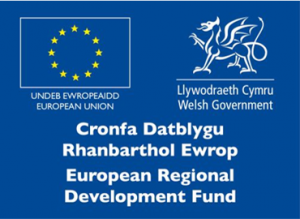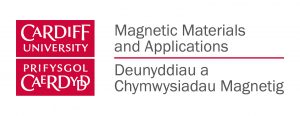Part 2 of Paul Mallett’s Personal Highlights from the 1DM2DM Workshop 2021
10 May 2022
Paul Mallett has updated his previous blog to include his thoughts on day 2 of the recent 1D&2DM workshop. Read his thoughts below.
To find out more about the work we are doing in MAGMA, our exciting new lab developments, and to hear how you can collaborate with us (including secondment opportunities) please contact us on magma-project@cardiff.ac.uk
The next 1D&2Dm conference will run in Cardiff in September 2022. Contact us on magma-project@cardiff.ac.uk to find out more.
…………………………………………………………
Paul Mallett Updated Blog:
Prof Carlo Ragusa of Politecnico di Torino began the event discussing high-frequency (HF) losses in soft magnetic materials. This is an increasingly exigent topic due to the commonplace technologies, such as DC-AC converters, that require magnetic performance under HF conditions. To deal with these situations, materials need to have low loss and good permeability from DC to MHz conditions, necessitating the need for effective modelling. By presenting a model that could consider these conditions and even complex waveforms, Prof Ragusa gave a useful example of how it is essential to understand the performance of different soft magnetic materials for optimising modern electrical systems and drives. Following this, Prof Anthony Moses used his introductory talk to reiterate the significance of intercollegiate and industrial dialogue: driving for a model distinct from mainstream conferences that emulated antecedent 1D&2DM workshops, where explicative talks from those involved with magnetic characterisation and measurement are followed by informal discussion.
MAGMA’s own Dr Chris Harrison highlighted problems that DC offsets have in network transformers due to the large currents they can generate, requiring strong characterisation of the materials used in these devices to prevent such occurrences. He showed that hysteretic losses and Barkhausen noise were useful tools for characterising a material’s response to such effects since it reveals detail about domain pinning and impurities. This will become increasingly relevant as the UK government starts to consider the replacement of network transformers, which have largely been around for several decades.
From the industrial side, the event’s sponsor, Brockhaus Measurements, presented a new tester for measuring localised magnetic properties of stator lamination stacks by creating a magnetic circuit with the teeth and a modular yoke. Dr Lukasz Mierczak showed how the design allows manufacturers to easily test small sections of stator cores for validation, building a map of localised degradation.

Prof Del Atkinson of Durham University gave an intriguing overview of work promoting the understanding of fundamental processes that govern the more macroscopic phenomena measured in magnetic materials. His work on the spin mechanics of electrons helps to remind us of the delicacy of magnetisation and how easily it can be disrupted – the effect of stress and other external factors that exist in industrial application of magnetic materials is a key area of interest at the moment.
From Warwick Manufacturing Group (WMG), Dr Frank Zhou showcased a method for in-situ testing of microstructural changes in electrical steel during annealing and tempering. This process utilised real inductance signals to indicate evolution of microstructure during the recovery and recrystallisation process, which were verified through optical micrographs and hardness measurements. Using this method, non-destructive testing of electrical steels could be conducted to evaluate the efficacy of an annealing route during manufacturing or processing.
Dr Fernando Landgraf of Sao Paulo University presented work on the minimum frequency range required for the determination of the hysteretic component of power losses in electrical steel, which is heavily dependent on external factors like stress, demonstrated by his conclusion that hysteretic losses have a 1/grain-size correlation.
The second day of the event began with a presentation by Dr Stuart Harmon from the National Physics Laboratory, who discussed new testing capability in response to industrial requirements. Of particular interest was the effects of temperature and stress, whose characterisation was being developed using new testing apparatus. Thermal aging showed minimal effect on magnetic performance which would be reassuring for any designer of an electrical drive.

Magcam is a company that make devices for magnetic imaging. Represented by its CEO Dr Koen Veraeke, Magcam’s 3D magnetic field camera was exhibited along with some applications for permanent magnets. This non-destructive method allows the user to measure magnetic fields in 3D that could be used in R&D, quality control or production environments due to its algorithm that extrapolates the fields from only a surface measurement while eliminating noise.
Dr Hugh Glass of Paragraph, a spin-out company from Cambridge University’s materials department, discussed a graphene Hall sensor which could measure nT to 30T while at room temperature and cryogenic temperatures, demonstrating its versatility. This device is available now for those who have applications in mind.
For the final talk of the event, Dr Afef Kedous-Lebouc of Grenoble Electrical Engineering Laboratory discussed developments into a new analytical loss surface model, which yielded more precise static and improved dynamic contributions. This model was general and robust, operating with different material grades and excitation conditions, which opened the door to its application in FEM software for simulating electromagnetic devices.
Overall the workshop was a good prelude to the in-person workshop that will be hosted next year (2022) at Cardiff University by the MAGMA group, where the same level of interesting talks can be expected with the addition of practical demonstrations. Moreover, newer avenues of research illuminated at this year’s workshop may have been explored, prompting even better discussions.


